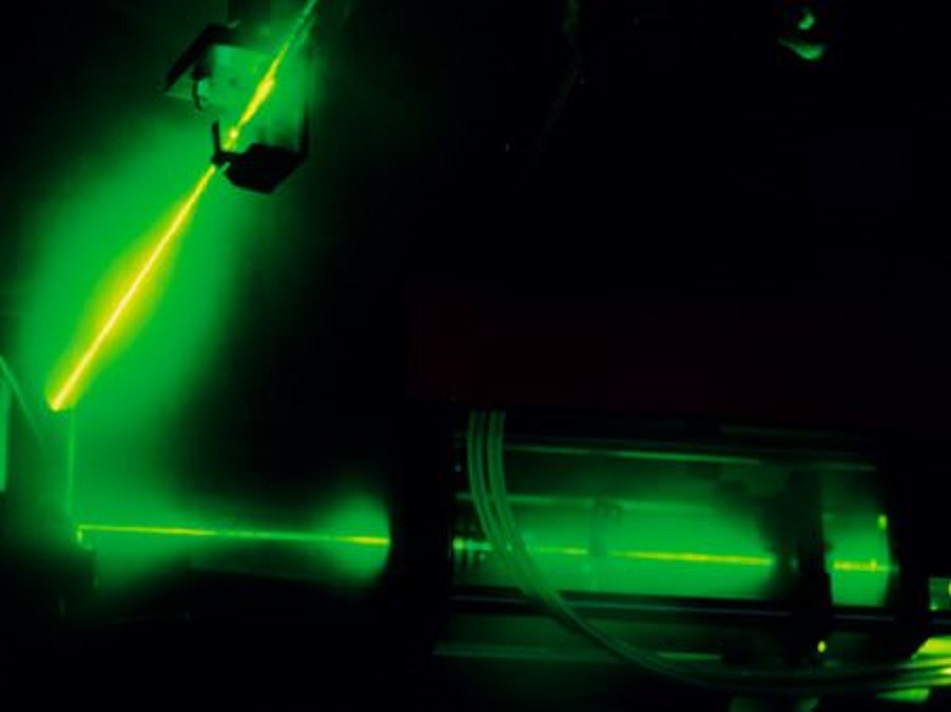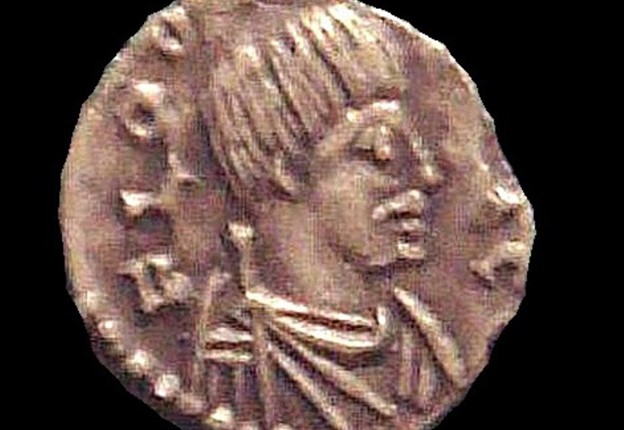We intend to take you on a journey to the superlaser that is being built at Magurele, with the help of which the deep secrets of matter will be investigated. For now, to prepare your trip, here is the history of the laser.
Episode 1
Quite by chance, I discovered that all sorts of antics are starting to creep into the virtual space of the Internet with reference to the superlaser that will be built in Magurele. I give you a headline from an online daily: “Good news: Romania will have the most powerful laser in the world. The bad news is that nuclear waste will be burned with it.”
The title given by journalists had an impact, although in the article things are (somewhat) clarified, in the sense that the academician Nicolae Zamfir, the director of IFIN Horia Hulbei is quoted, showing that this is not the purpose of the super laser from Magurele, and the possibility of nuclear waste with the help of the laser it is only a scientific hypothesis for now. Many posts have appeared on blogs specializing in conspiracy theories, warning that „we will become Europe’s landfill” when it comes to nuclear waste.
I don’t think that the spread of such mischief can be neglected. We are facing a serious problem, which must be solved by correctly informing the general public. It would be a pity for the formidable research tool that is now being built in Magurele to acquire the aura of a European conspiracy against Romania.
Before I move on, I need to tell you the story of the discovery of a phenomenon we haven’t talked about yet. We need an intermezzo. We need to go back in time.
The first doubts
In 1669, Danish Erasmus Bartholin discovered a strange phenomenon. He noticed that looking at a line through a calcite crystal (Iceland spar) he saw it doubled. Bartholin also gave an explanation for this strange phenomenon. In the cold Nordic countries, the light, instead of weakening, receives additional energy. In fact, he had discovered the phenomenon of birefringence (or double refraction) that manifests in the case of certain crystals.
Huygens would propose an explanation for this phenomenon, assuming that a primary, spherical wave and a secondary, ellipsoidal wave appear in the crystal. The explanation is less important, important is something else, an experiment he announced in 1690. He discovered that if he places a second crystal above the first and rotates it slightly, in certain positions, the image disappears completely.
In 1808, the Frenchman Étienne Louis Malus, in turn, made an important finding. He discovers that when sunlight reflected by a mirror passes through a Iceland spar, the relative brightness of the two images obtained varies when the crystal is rotated around the axis represented by the reflected light beam.
Malus explains this phenomenon by a hypothesis: light corpuscles align after reflection in a manner similar to that in which magnetic bodies are aligned by the poles of a magnet. For this reason he introduces the term of “polarization” of light.
Fresnel also studies closely the phenomenon of polarization and, following the experiments performed, concludes that light is a transverse wave, ie the oscillations of light waves are perpendicular to the direction of propagation. He came to this conclusion after finding that two beams of polarized light do not interfere in certain situations.
This phenomenon could only be explained in one way: light is a transverse wave, and when their polarization planes are perpendicular, no interference occurs between the two beams.
Now, after this intermezzo, it’s time to introduce…
Michael Faraday, the self-taught genius
Faraday had no university studies, instead he had a passion for knowledge, doubled by an extreme rigor. He did not master mathematics, instead he knew how to perform experiments like no other.
By the way, I can tell you that Faraday, when he was an apprentice to a bookbinder, discovered a book, Conversations on Chemistry by Jane Marcet. He was only 15 at the time, and this book of popularizing chemistry, written with great skill, in the form of a dialogue, also contained a number of experiments that could be done at home. Young Faraday read it with passion and did most of the experiments in it.
A second decisive moment for the future scientist occurred in 1812, when he received an entrance ticket to the popularization conferences held by the great chemist Sir Humphrey Davy. Faraday was extremely impressed and sent him a letter and a 300-page book, based on the notes taken during these conferences.
In the same year, Davy has a laboratory accident and is injured in his left eye. An unfortunate event for the great chemist, but an opportunity for Faraday, who is called to help Davy in the laboratory. And so begins the formidable career of a self-taught scientist…
There is much to be said for Faraday’s great discoveries in physics and chemistry. Unfortunately, we do not have enough space at the moment.
For our subject, that of light, a certain achievement of the self-taught scientist is much more important. On September 13, 1845, Faraday would discover the effect that now bears his name. That day, he noted in his notebook the details of an experiment in which a beam of polarized light was passed through a piece of “heavy” glass containing lead.
He then used an electromagnet and found that when the direction of the magnetic field lines was parallel to the direction of the polarized light flux, a rotation of the light polarization plane occurred. As Faraday noted, “magnetic force and light are in a relationship with each other.” The finding is one of great importance. Faraday approached the interpretation of light as an electromagnetic wave.
But Faraday’s contribution does not stop here. He introduces two extremely important concepts: the magnetic field and the magnetic field lines. He did not mathematize them at all, he did not have the necessary training, but with their help he could explain a series of phenomena in the area of electromagnetism. He imagined the lines of force as emanating from the poles of a magnet (magnetic lines of force) that could be visualized, for example, with the help of iron filings.
In 1851, he makes another important statement:
„I want to narrow down the meaning of the term line of force so that it does not involve anything other than the condition of force at a certain point, as strength and direction, and to exclude (at present) any idea of the nature of the physical cause of the phenomenon.”
The concepts of field and field line were received in their time with some reluctance. Faraday could only offer brilliant experiments without accompanying them with the proper mathematical formalism. Fortunately, there was a man, a pure-blooded theorist, who gave them due attention.
Maxwell and the aesthetics of mathematical equations
The Scotsman James Clerk Maxwell showed an early talent for mathematics, especially geometry. As a child, he discovered the regular polyhedra before reading about them. He is said to have been an introverted, sensitive man, passionate about reading and drawing. Unfortunately, he passed away at the age of only 48, following a colon cancer.
Maxwell’s scientific concerns were very diverse. He made decisive contributions in thermodynamics, color theory, electromagnetism, etc. For our history, we will turn our attention to the revolution it has provoked in the field of electromagnetism.
In 1855, Maxwel published his first work on electromagnetism. Unlike many of his other comrades, he mathematically analyzes Faraday’s concepts, and his work is called “On Faraday lines of forces”. Starting from them, Maxwell introduces analogies in the field of incompressible fluid mechanics and manages to describe the laws of electromagnetism in a mathematical form and shows how electricity and magnetism are related to each other. Basically, it unifies electricity and magnetism.
In 1861, he extended the mathematical formalism and came to describe, through a system of 20 differential equations with 20 variables, all the phenomena known at that time, in the field of electromagnetism. It’s just the begining. For now, there are too many equations and therefore no elegance. They are not beautiful at all.
In 1873, he managed to take a step further. In “A Treatise on Electricity and Magnetism” he reduces the number of these equations from 20 to only 12. Twelve equations that brought together a whole field of physics! (Later, in 1893, the British mathematician and physicist Oliver Heaviside succeeded in converting them into a set of only four differential equations, which represent the form in which they are used today)
In the same work, Maxwel pays a beautiful homage to Faraday, who, by introducing the concepts of field and lines of force, offered a plastic image of the phenomena in magnetism:
„As I progressed in studying Faraday, I was able to realize that his way of conceiving phenomena was also mathematical, although he did not present them in the conventional form of mathematical symbols. I realized that these ideas could be expressed by common mathematical formulas and compared with those obtained by professional mathematicians.”
„For example, Faraday saw lines of force crossing all space, where mathematicians saw centers of force acting at a distance; Faraday introduced an environment in which he took into account only distance; Faraday sought the origin of phenomena in real actions that take place in this environment; [mathematicians] were content to find the property of remote action attributed to electric fluids.”
„When I translated into mathematical form what I consider to be Faraday’s ideas, I found that, in general, the results offered by the two methods are concordant, in the sense that the two methods take into account the same phenomena and lead to the same laws, but Faraday’s method starts from the general assembly to reach the components through analysis, while the usual mathematical methods start from the components to raise the whole edifice on the path of synthesis.”
You may be wondering why I dedicated so much space to Maxwell. After all, he is dealing with electromagnetism and not light. Well, the reason is simple and obvious. Two of Maxwell’s equations prove that light is an electromagnetic wave.
It is the equation also called Faraday’s Law, which describes how a variable magnetic field induces an electric field, and the one called “Ampere’s Law with Maxwell’s Correction”, which shows that a magnetic field can be generated in two ways: by an electric current (this is the initial form of the “Ampere’s Law”) and by varying the electric field.
If I may be less precise, I would summarize these two laws as follows: a variable magnetic field induces a variable electric field and, conversely, a variable electric field induces a variable magnetic field. Without going into mathematical details, it is good to know that by combining the two laws presented above in the particular case of vacuum, the equation of the electromagnetic wave is obtained.
In fact, a few years earlier, in 1864, in “A Dynamic Theory of the Electromagnetic Field”, Maxwell stated:
„The results seem to show that light and magnetism are phenomena of the same nature, in the sense that light is an electromagnetic disturbance that propagates according to the laws of electromagnetism.”
From Maxwell onwards, we have the representation that has become a classic and is presented at school. The electromagnetic wave is composed of a magnetic wave, which connects with an electric one, and the oscillation planes of the two waves are perpendicular to each other.
I hope I didn’t bore you with this rather mathematical chapter. I could not avoid it, because the Maxwell moment is fundamental in the history of light. If you allow me, I would end this chapter by saying that Maxwell lit up the light.
Intermezzo
Now things seemed clear. Light is an electromagnetic wave and we have an extraordinary mathematical description of it. I will not go into other details, I will skip less significant milestones for our history. Towards the end of the 19th century, the results obtained in all fields of physics were truly astonishing. It seemed that in terms of fundamental concepts, physics was a (almost) completed science. There were only a few issues that needed to be clarified.
One of them was related to the light ether, the elastic medium through which light was supposed to propagate. A crucial experiment, carried out by Michelson and Morley in 1881, which tried to determine the relative speed of the Earth relative to this “luminous ether”, failed to bring the expected confirmation. Although it was repeated in 1887, with more precise instruments, the experiment continued to give negative results. This unexpected result paved the way for the theory of relativity. But that’s another story.
More important for our history is the second problem, which related to the radiation spectrum of the black body. It was a serious problem, which could not be solved by applying the classical principles of physics.
First, let’s see what a black body is. Physicists operate with this concept, which is an ideal object that fully absorbs incident electromagnetic radiation, regardless of wavelength. The black body emits electromagnetic radiation with a spectral distribution that only depends on its temperature.
In nature there is no such ideal object, but one can be constructed that approximates very well the behavior of the black body. Imagine a cavity that only has a small hole through which electromagnetic radiation can escape from inside it. When its interior is in thermal equilibrium, electromagnetic radiation is emitted through the hole I mentioned earlier, which approximates very well those emitted by an ideal black body.
The spectral distribution of these electromagnetic radiations emitted through the orifice of our cavity does not depend on the shape of the cavity or the reflection coefficient of its walls, but only on the temperature inside it, when the thermal equilibrium has been established.
The black body posed serious problems for physicists because there was no rigorous mathematical representation of the spectral distribution of the radiation emitted by it. Around 1890, the German physicist Wilhelm Wien obtained a mathematical relation, which will be called the Wien law, to describe the behavior of the black body, but it had two major shortcomings.
First, Wien’s law did not have a solid theoretical foundation, but rather an empirical relationship, obtained on the basis of measurements. The second problem was even more serious. Wien’s formula provided correct results for the high frequencies of the electromagnetic spectrum and deviated greatly from experimental data in the low frequency area.
In 1900, Lord Raylegh, starting from theoretical considerations related to the classical mechanics of the time, elaborated a mathematical relation for the spectral distribution of the electromagnetic radiation emitted by the black body, depending on the temperature. Five years later, Sir James Jeans makes a correction to this relationship, which will be called the Raylegh-Jeans law.
All was good, the mathematical relationship had been rigorously deduced theoretically, and things might have seemed very clear. But… although it gave correct results for the high frequency area, it moved exponentially away from the measurements, as the frequencies of the electromagnetic waves decreased.
Please note: Raylegh-Jeans law brilliantly applied the principles of classical mechanics. The fact that it could not explain the spectral distribution of black body radiation for all wavelengths was a very serious problem. Something had to be changed somewhere. The change was made almost against his will by Max Plank. And that change led to the birth of quantum mechanics. But I’ll tell you about that in the next episode.




